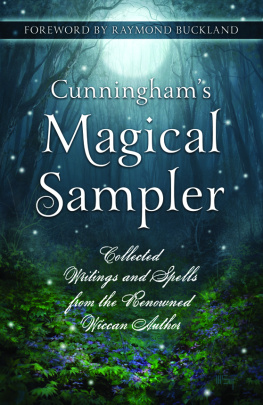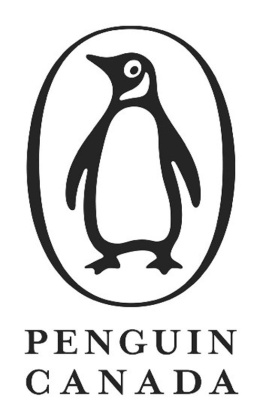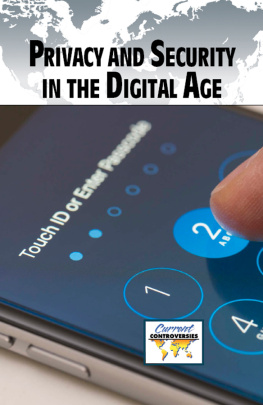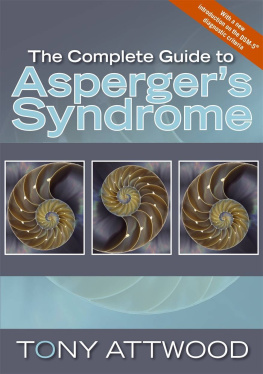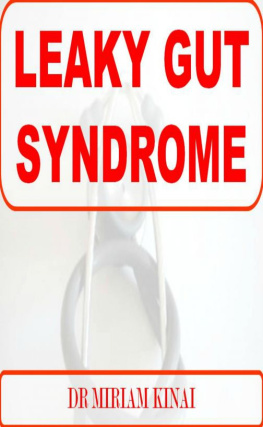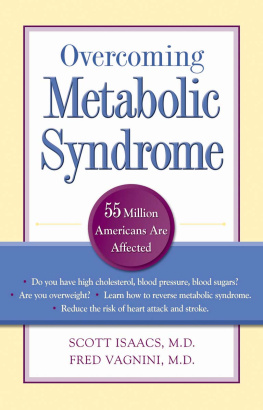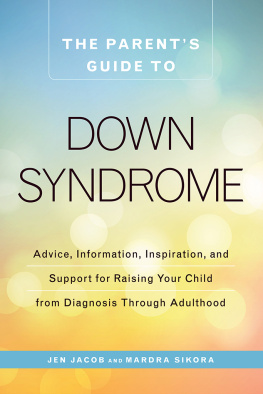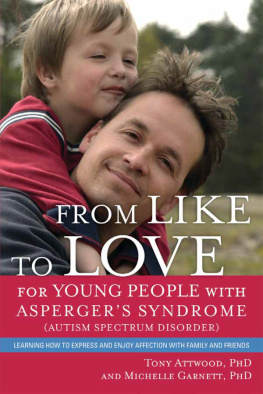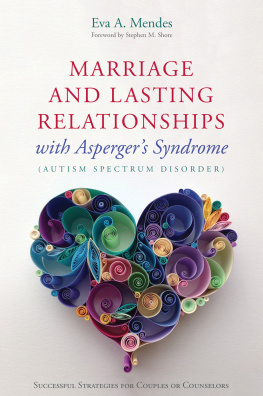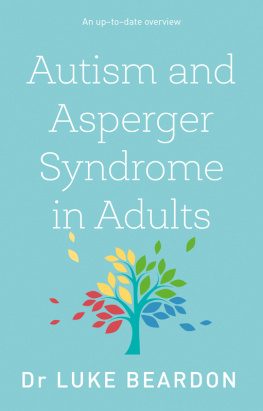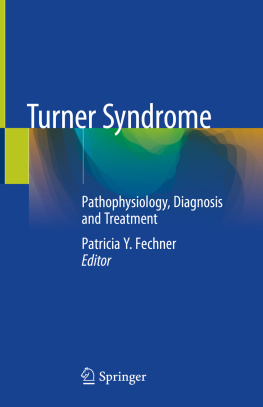Down Syndrome
Down Syndrome
An Introduction for Parents
and Carers
CLIFF CUNNINGHAM
SOUVENIR PRESS
Copyright 1982, 1988, 2006 by Cliff Cunningham
First published in Great Britain in 1982 by Souvenir Press Ltd
43 Great Russell Street, London WC1B 3PD
Second revised edition 1988
Third revised edition 2006
The right of Cliff Cuningham to be identified as the author of this work has been asserted by him in accordance with the Copyright, Designs and Patents Act, 1988
All rights reserved. No part of this publication may be reproduced, stored in a retrieval system or transmitted, in any form or by any means, electronic, mechanical, photocopying, or otherwise, without the prior permission of the Copyright owner.
ISBN 0285636979
9780285636972
Typeset by M Rules
Printed and bound in Great Britain by
MPG Books Ltd, Bodmin, Cornwall
To you because you are involved
Contents
When I first wrote this book I knew of only two others for parents, and one only covered medical aspects, At the time Down Syndrome Associations were just becoming established in a few places. Since the last edition there has been a considerable increase in books for parents and journal articles about Down syndrome. Many countries now have their own Down Syndrome Associations, with their own publications and websites, linked into a European and World Association. This gave me an excuse not to up-date the book. It has taken the encouragement, and gentle pressure, of many parents and colleagues to shake me out of my natural lethargy. I must thank Paul Williams of Disability News who reviewed the last reprint and strongly stated we had taken the easy way with new photographs and that the book was worth up dating. I must particularly thank those parents who selected and translated it into Spanish, Dutch, Polish and most recently Slovenian, as part of their setting up of new Associations in their own countries. I found this very supportive. Special thanks go to Marzenna Rogala who did a fine translation into Polish and then persuaded me to finally start this new edition. Above all, however, I needed to re-write the book to acknowledge the effort and support of the families and young people with Down syndrome who make up the Manchester Down Syndrome Cohort. When we started with the babies in 1973 it never occurred to me that I would have the opportunity and privilege to watch them grow into young adults and find out first hand the sort of people they had become. My overwhelming picture is of young, positive, optimistic people enjoying and getting on with their lives. They, and their families, have provided the inspirations and foundation for any understanding I have achieved about Down syndrome.
I have needed a lot of help from friends and colleagues to rewrite the book. I have also contacted many other people to clarify issues and recent work too many to name but all were most helpful, something that I have come to expect in the world of Down syndrome. Without Alan Fryer of the Department of Clinical Genetics, Royal Liverpool Childrens Hospital I would not have coped with the genetics; as usual Richard Newton guided me through the medical aspects as well as giving me carte blanche to freely take from his own new edition; Vee Prasher did the same on aspects of health in adults with Down syndrome; Maggie Woodhouse of the University of Cardiff on visual problems, and Bethan Davies as ever kept me sensibly up to date on hearing difficulties. Tricia Sloper, Steve Turner and Alison Alvarez largely undertook the studies with the cohort during the teenage years. Sheila Glenn and I have continued the research into Down syndrome over the last ten years, and she has been very helpful with Chapters 8, 9 and 10.
Special thanks go to Ernest Hecht of Souvenir Press. It was he who started the Human Horizon Series that has had such an impact on the lives of people with disability, and has ensured this third edition has finally been published.
I must thank Tamsin Ford, not just for my grandchildren, but the illustrations; Sue Hill, my ever-enthusiastic neighbour for typing and sorting out the book when I was flagging and Gerry Cooney for editing. My son Barnaby, who unlike myself works in the front line with people with disability, kept me abreast of new developments and person-centred planning. My final thanks are for Marta, my wife, for her support, proof reading, research assisting, professional experience and, as usual, honest positive criticism.
Cliff Cunningham, Spring 2006
Thanks to Dana Brynelsen for her supportive comments on drafts; Margaret Flynn for her help on the section dealing with brothers and sisters; Robert Craven for his help with the illustrations. For the photographs thanks go to David Griffths, June Hayes-Light and the many parents who keep sending me photographs and allow me to use them. Special thanks are extended to Dian Donnai and the Department of Medical Genetics at St.Marys Hospital, Manchester for help with the chapter on chromosomes. My most grateful thanks are extended to Ellen Cullen for the typing and layout of the book and her endless patience with the redrafts. Finally, I must thank my wife Marta, who as ever has combined honest criticism with patience and support. My children will be glad to know the chapters are finished and, once again, they can dominate my time and play elephants outside the study. I have been supported over the last eight years by research grants from the Social Science Research Council and the Department of Health and Social Security.
It is an indication of the amount of activity related to Downs syndrome that I have needed to update this book only five years after the first edition. I am indebted to all the parents and professionals who have written to me and given me ideas for changes and additions and the encouragement to revise the book. I am again grateful to Dr. Dian Donnai, and to Dr. Richard Newton of the Royal Manchester Childrens Hospital for help on the medical aspects. I am indebted to Dr. Jennifer Dennis of the Park Hospital for Children, Oxford, and Dr. David Southall of the Cardiothoracic Institute, London, for allowing me to describe their work on upper airway obstruction and to Dr. Joyce Ludlow for generously allowing me to incorporate her work. I, of course, take responsibility for errors. I must thank my colleagues who, at various times, have been members of the Manchester Down Syndrome Cohort team: Tricia Sloper, Meg Aumonier, Jiri Berger, Sheila Glenn, Liz Byrne, Anne Rangecroft, Christina Knussen and Chris Lennings, and also the associated students who have made a large contribution: Margret Arnlsdottir, Gyda Haroldsdottir, Vicki Gibbs and Stephanie Lorenz. The Research has been funded by the DHSS.
Note to the 1997 Reprint
Thanks again to all the parents who sent in photographs for the new picture selection, and to the DSA, Belinda Whiting and Stephen Leighton for kindly giving me permission to reproduce photographs from their collections.
Down after Dr. Langdon Down who first recognised the distinctive characteristics of Down syndrome.
Syndrome a collection of distinctive characteristics or symptoms.
It results from extra genetic material from chromosome 21 (). Not every person with it has every characteristic, or the same level of a characteristic. There are great differences between people with Down syndrome in terms of their intellectual abilities, sociability, height, weight, health, personality and so on just as great, in fact, as the differences between the rest of us.


